ride out the storm?






The UK stock market is dominated by a small number of very large companies that frankly, make rather dull investments. We’re much more interested in finding those growth businesses below the radar that are making big advances in sectors such as healthcare, energy and finance, that are shaking up the old order. Exciting companies that are shaping the future, not just of the UK, but the whole world.
Please remember that changing stock market conditions and currency exchange rates will affect the value of the investment in the fund and any income from it. Investors may not get back the amount invested.
out more by visiting our website bailliegifford.com
Information Document is available. Call 0800 917 2112.
New chancellor calms financial markets, but some big stresses are still to come
US third quarter earnings will be crucial for market confidence
Insurance industry braces for multi billion pound hurricane losses
Why have property trusts been so badly hit during the sell-off?
Why a Kroger-Albertsons combination could turbocharge Ocado’s growth
Shares publishes information and ideas which are of interest to investors. It does not provide advice in relation to investments or any other financial matters. Comments published in Shares must not be relied upon by readers when they make their investment decisions. Investors who require advice should consult a properly qualified independent adviser. Shares, its staff and AJ Bell Media Limited do not, under any circumstances, accept liability for losses suffered by readers as a result of their investment decisions.
Members of staff of Shares may hold shares in companies mentioned in the magazine. This could create a conflict of interests. Where such a conflict exists it will be disclosed. Shares adheres to a strict code of conduct for reporters, as set out below.
1. In keeping with the existing practice, reporters who intend to write about any
securities, derivatives or positions with spread betting organisations that they have an interest in should first clear their writing with the editor. If the editor agrees that the reporter can write about the interest, it should be disclosed to readers at the end of the story. Holdings by third parties including families, trusts, self-select pension funds, self select ISAs and PEPs and nominee accounts are included in such interests.
2. Reporters will inform the editor on any occasion that they transact shares, derivatives or spread betting positions. This will overcome situations when the interests they are considering might conflict with reports by other writers in the magazine. This notification should be confirmed by e-mail.
3. Reporters are required to hold a full personal interest register. The whereabouts of this register should be revealed to the editor.
4. A reporter should not have made a transaction of shares, derivatives or spread betting positions for 30 days before the publication of an article that mentions such interest. Reporters who have an interest in a company they have written about should not transact the shares within 30 days after the on-sale date of the magazine.

Taking your time before selling an asset is important however much you might not want to hear it
We’re often told that patience is a virtue, which let’s be honest can be fairly annoying – we understand, obviously, but it’s not always easy to put this doubtless good advice into practice.
This maxim is just as frequently applied to investing as it is to other areas of everyday life, and will probably prove no less of an annoyance to anyone sitting on significant losses in 2022.
However, there is fresh evidence that when it comes to stocks, however much it might reek of being scolded by a parent or a schoolteacher, this advice should be grudgingly accepted.
One of the UK’s largest investment companies, Alliance Trust (ATST), has modelled a £1.3 billion impatience tax on knee-jerk decisions by UK investors over the last 12 months.
It defines impatient investors as those who sell a losing share, or in other words crystallise a loss, when the market dips, only to buy back again at a higher level when it recovers.
According to its research, 45% of UK investors are willing to admit to having done this in the past and 12% in the last year. Tellingly, just 41% said they were confident it was the right decision for the asset in question, while 23% confessed they got spooked and cut their losses and 16% fell prey to peer pressure from others selling. Over half of respondents (52%) regretted selling in hindsight.

Alliance Trust has produced a chart to illustrate the cost of impatient investing over a 30-year timeframe.
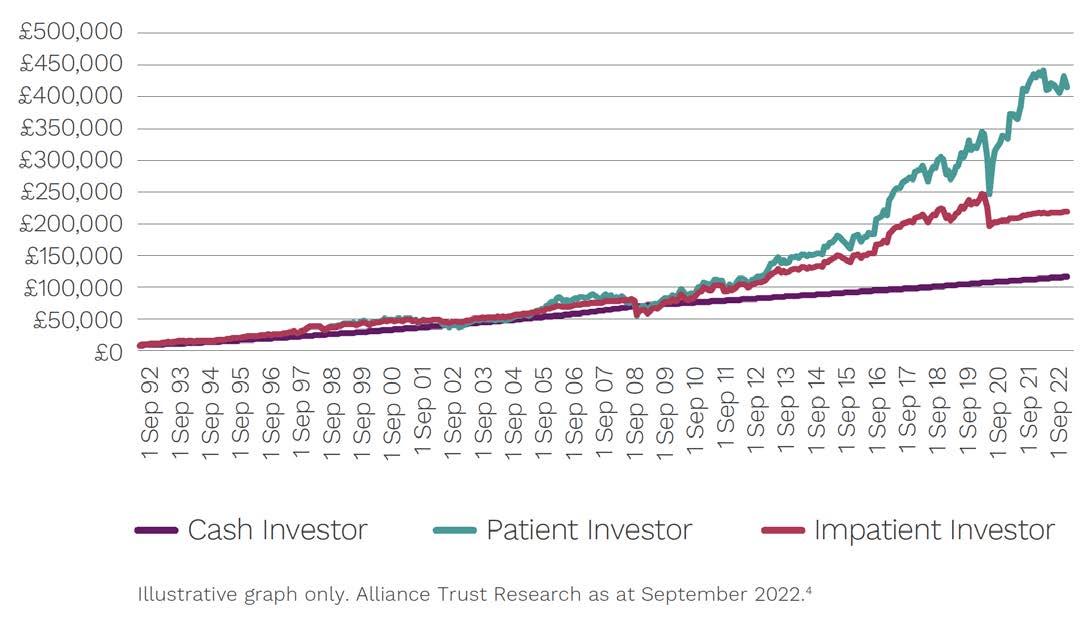
The chart plots the returns for two hypothetical investors who both invest £10,000 in 1992 and add 10% of the average monthly salary for the next three decades. The patient investor holds their nerve through any market dips whereas the
impatient investor sells 25% of their shares if the market dips 5% in a single day. When the market recovers 10% in a single day, the impatient investor buys back in.
After 30 years, the patient investor is sat on £410,757 while their impatient counterpart has just more than half this total at £217,884. Given this figure doesn’t include fees or other costs associated with trading in and out of shares, the gap is actually likely to be more significant.
It’s not surprising one of the bigger investment trusts is trying to remind people of the merits of long-term investing, but it makes the entirely fair point alongside this research that people selling investments at a loss to put their money into what they perceive as safe cash deposit accounts are in fact taking a substantial risk, particularly given even improved rates of return from cash come nowhere near to matching inflation.
According to almost all studies, stocks beat cash over the long term. This has undoubtedly been a bruising year and being patient doesn’t mean doing nothing with your investments. However, before you sell make sure you have weighed up the decision very carefully.
By Tom Sieber Deputy EditorShort-term measures to steady the ship could have negative long-term consequences
In a bid to calm financial markets the new chancellor Jeremy Hunt has rowed back (17 October) virtually all the proposed tax cuts in the mini budget while the cap on energy bills will now only last until April 2023 rather than for two years.
Long-dated UK gilt prices surged 5% higher as yields dropped from 4.8% on 14 October to 4.4% while the 10-year yield fell by 0.4% to 3.9%.
Despite the fall in yields, borrowing costs remain around 1% higher than where they stood before the disastrous mini-Budget was announced on 23 September.
Meanwhile the pound traded higher against the US dollar gaining almost 1% to £1.127, still shy of the £1.145 level before the budget. The FTSE 250, which has a more domestic focus than the FTSE 100, also enjoyed a strong recovery.
Whether the latest U-turn by the government is sufficient to usher in a period of relative calm and restore the confidence of international investors is an open question given the precarious position of the prime minister Liz Truss.
Analysts at Liberum argue gilt yields have the potential to fall further which will be good news for millions of mortgage holders.
They commented: ‘We see this as a major positive to calm markets down and expect gilt yields to decline further in coming weeks.
‘A short-term rally in stock markets, particularly in sectors like homebuilders, real estate and utilities is likely, though it will likely be limited in duration.’
Following Hunt’s statement, shares in housebuilders Barratt Developments (BDEV) and Vistry (VTE) gained around 4% with gains seen across the sector.
Shares in British Gas owner Centrica (CNA) traded 3% higher while SSE (SSE) and Drax (DRX) added 1% apiece.
Cutting back energy support to six months from two years means a big shock could be coming for consumers early in 2023.
While real-terms cuts to public services could prompt further industrial action and lead to poorer outcomes for society as a whole.
Research by thinktank Resolution Foundation estimates more than five million households could see their annual mortgage payments increase by an average of £5,100 by 2024 as people move off fixed rate deals.
The study which was released before the move lower in gilt yields estimates around £1,200 is due to changes in interest rate expectations following the mini budget.
Meanwhile the LDI (liabilities driven investment) corner of the pensions market needed a Bank of England intervention to maintain financial market stability.
Independent pension consultant John Ralfe has argued for an urgent investigation into the use of excessive leverage by parts of the pensions market. [MGam]
The season has started well but key companies have yet to report
Putting all the tumult in the UK to one side for a moment, markets are likely to be driven by US earnings over the next few weeks so investors should make a note in their diary of when major US companies are reporting.
The third-quarter earnings season has actually already started with results from major banks such as Citigroup (C:NYSE), JPMorgan Chase (JPM:NYSE) and Wells Fargo (WFC:NYSE), and so far the message seems to be the US economy is ‘resilient’ and consumers are coping with inflation.
However, despite their upbeat tone, it is worth noting the banks are rebuilding their reserves in case there is a rise in bad loans down the line.
As Shares went to press, earnings were due from consumer health giants Johnson & Johnson (JNJ:NYSE) and Procter & Gamble (PG:NYSE) as well as technology firm IBM (IBM:NYSE), streaming provider Netflix (NFLX:NASDAQ) and electric vehicle-maker Tesla (TSLA).

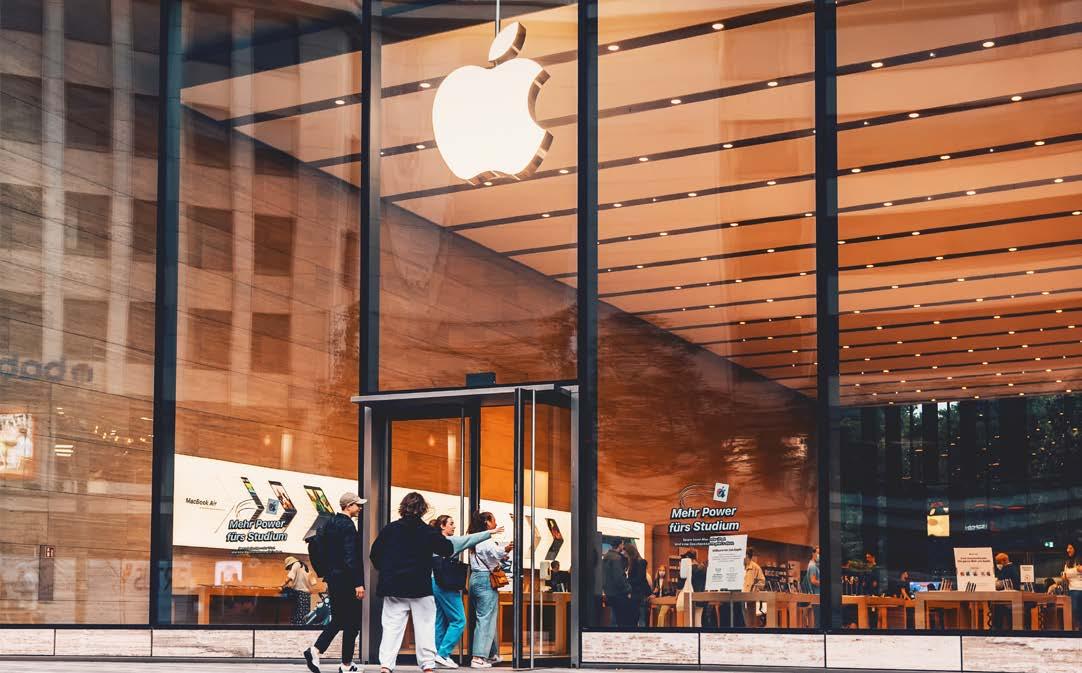
Date Company
Tues 25 October 3m (MMM)
Alphabet (GOOG)
Coca-Cola (KO)
General Electric (GE)
General Motors (GM) Microsoft (MSFT) Visa (V)
Weds 26 October Boeing (BA)
Bristol-Myers (BMY)
Ford Motor (F)
Kraft-Heinz (KHC)
McDonald's (MCD)
Meta Platforms (META)
Thurs 27 October
Amazon.com (AMZN)
Apple (AAPL)
Caterpillar (CAT)
Intel (INTC)
Mastercard (MA)
Merck & Co (MRK)
The floodgates really open next week though, with reports from dozens of major consumer, healthcare, industrial and technology stocks.
In the lead-up to earnings season there was
Fri
Chevron (CVX)
Exxon Mobil (XOM)
concern companies might miss forecasts, but analysts have cut their estimates sharply in recent weeks and EPS (earnings per share) growth for the S&P 500 index is now seen at just 2% this quarter.
That represents a very low bar for companies to beat, so if they are feeling the strain from a slowing economy and higher interest rates it may not show
up until the next quarter or the one after.
In terms of relevance, Alphabet (GOOD:NASDAQ), Amazon (AMZN:NASDAQ), Apple (AAPL:NASDAQ) and Microsoft (MSFT:NASDAQ) are likely to have the biggest impact – be it positive or negative – on market sentiment. [IC]
UK firms are maintaining radio silence on the impact for now
LESS THAN A month after Hurricane Ian, a large and highly destructive Category Four Atlantic storm which devastated large parts of Florida, estimates of its impact are rising rapidly.
Initial forecasts put the cost of the storm at between $20 billion and $30 billion, but once the full extent of the damage to Fort Myers was appraised estimates soared to between $50 billion and $65 billion.
The Financial Times called the hurricane ‘a wake-up call’ for the insurance industry with US risk modelling company RMS estimating the loss to private insurers at between $53 billion and $74 billion.
Rival risk modelling firm Karen Clark & Co says the privately insured loss will be close to $63 billion although the total economic damage will be ‘well over $100 billion’, even higher
than the losses caused by Hurricane Katrina.
So far, the only European insurer to break cover is Swiss Re (SREN:SWX) which has reported storm losses of $1.3 billion.
The UK insurers most exposed to the catastrophe market are Lancashire (LRE), which took a big hit last year on Hurricane Ida, and Hiscox (HSX), which suffered big losses on Hurricane Michael in 2018.
So far neither firm has commented on Hurricane Ian but Lancashire reports on its third-quarter on 3 November and Hiscox is also due to issue a trading update early next month. [IC]
up losses of nearly 30% regardless of whether they are specialist or generalist and regardless of the quality of their portfolio, their average lease duration, their loan-to-value ratio or the interest rate on their debt.
As investors in the property sector will know, REITs or real estate investment trusts have been one of the worst parts of the market as interest rates expectations have climbed in recent weeks.
Since the middle of September, the average REIT has lost more than 20% with some racking
In other words, the selling has been indiscriminate based on fears that higher interest rates will impact returns and property valuations, and by extension NAVs or net asset values, while higher borrowing costs mean less cash to return in the form of dividends.
In addition, the decision by some large openended property funds to limit redemptions has added momentum to selling in closed-ends funds as institutional investors have cut their exposure to the property sector by selling what they can.
Segro Industrial £8.97bn
Land Securities Diversified £3.81bn
Unite Group Residential £3.33bn
British Land Diversified £3.10bn
Tritax Big Box Specialty £2.47bn
Derwent London Office £2.21bn
LXI REIT Diversified £2.03bn
Big Yellow Group Storage £1.92bn
Safestore Holdings
£1.75bn
Londonmetric Property Diversified £1.67bn
Average
From a long-term income investor’s point of view, there are now several trusts yielding 6% in the health care, office and retail sub-sectors, while some of the bigger diversified companies are yielding even more such as British Land (BLND) (6.4%) and Land Securities (LAND) (7.6%) according to Sharepad.
news is that most trusts are conservatively geared so without any ‘defensive action’ by management gearing would remain ‘broadly comfortable’ in the 30% to 40% range.
Another point we would make is that many trusts had already fixed their debt at low interest rates or hedged it against future increases before the rise in official bank rates or the recent spike in gilt yields.
For example, Laura Elkin at AEW UK REIT (AEWU) told Shares recently that the trust had anticipated the rise in rates and refinanced its entire debt at under 3% interest rates back in May.


Meanwhile the average discount to NAV for the sector has ballooned to 38% according to analyst Justin Bell at Numis, although as he points out some of the valuations used in the calculation will be ‘stale’ as they date back as much as six months.
Bell calculates that the yield ‘expansion’ implied by the drop in prices is as much as 3% for generalist (diversified) trusts and over 2% for office and retail property trusts.
However, if asset valuations were to be cut resulting in an increase in loan to value the good
Meanwhile, AEW is sitting on a sizeable cash pile having disposed of several assets above their most recent NAV and is actually reaping the benefits of higher rates. [IC]
Planned US mega-merger could boost online groceries specialist’s technology sales across the pond
SENTIMENT TOWARDS OCADO (OCDO) has soured year-to-date as pandemic gains fade and the cost-of-living crisis impacts its online grocery delivery business.
But the share price ripened on news of a planned groceries mega-merger between Kroger (KR:NYSE) and Albertsons (ACI:NYSE) which, if it gets the nod from regulators in the US, could benefit the FTSE 100 online grocer-to-e-commerce tech licensor.
Groceries giant Kroger is
Ocado’s biggest client and a significant shareholder, having signed an exclusive US partnership with Ocado in 2018 to help ramp up its online grocery business through the construction of robotic warehouses, or customer fulfilment centres (CFCs), which pick and pack grocery orders to be distributed to customers.
Kroger is confident its planned $25 billion takeover of smaller rival Albertsons will be approved by US regulators due to store
disposals, though it doesn’t expect the deal to complete until early 2024. However if the combination, which could provide Kroger with the clout to compete with Walmart (WMT:NYSE) and Amazon (AMZN:NASDAQ) is approved, it could open the door for major expansion in the US should Albertons make use of Ocado’s warehousing and automation technology.
The merger buzz has provided a boost for Ocado at a tough time for Ocado Retail, its joint venture with Marks & Spencer (MKS), as cash-strapped customers cut back on spending and switch to discounters in droves. On 13 September, Ocado Retail reported that its average basket size fell 6% to £116 in the 13 weeks to 28 August. [JC]
Long-run structural growth drivers are in place and firm should get more credit from the market in time
is a high-quality business with long-term growth and strong operating margins… we believe Halma is well placed to take advantage and one of the most resilient names in the sector,’ is what Shore Capital’s analysts wrote after analysing the company’s most recent full year results (to 31 March 2022) in June.
‘Halma is the best kind of predictable, with the full year 2022 results delivering the 19th consecutive year of record profit, the 43rd consecutive year of dividend growth of 5% or more, and record revenue,’ said analysts at investment bank Berenberg.
Shares in Halma (HLMA) have fallen nearly 40% since the beginning of the year, putting the stock in the bottom quartile for performance among FTSE 100 companies. This means that shares in the company can now be bought at 26 times March 2024 earnings. This represents Halma’s lowest valuation in four years, and is roughly the same price to earnings multiple as 2016.
The chart shows how the shares have derated, and though it is based on historic earnings multiples the trend it reveals is the same.
Retail investors reasonably familiar with the company may find this startling, and several analysts share that sentiment. ‘In our view, Halma
Put another way, Halma is exactly the type of company Terry Smith would likely consider buying for the Fundsmith Equity Fund (B41YBW7) if it had greater scale. Illustrating that point, as of June 2022, the Smithson Investment Trust (SSON), also part of the Fundsmith stable, had 2% of its assets tied up in Halma.
Halma is a group of design and manufacturing businesses that provides health, safety and environmental monitoring equipment based in Amersham, Buckinghamshire. It’s a vast product portfolio that includes things like radiation hazard detectors, water quality monitors and fire safety kits and sensors.

By doing so it taps into non-discretionary spending often backed by regulatory and legislative drivers.
The company’s objective is simple. It aims to double its earnings every five years while generating strong returns on investment and equity. These latter metrics were approximately 14% and 19% over the past year, according to Investing.com data.
Growth is bolstered by bolt-on acquisitions that will feed the wider profits and cash generation machine. Two announced earlier this month (October 2022) are great examples.
First, US-based IZI was bought for $168 million. It designs and makes medical consumable devices mainly used by interventional radiologists and surgeons in a range of acute, hospital-based diagnostic and therapeutic procedures. Weetech followed just days later in a €57.5 million deal. It designs and manufactures safety-critical electrical testing technology, largely used to test the integrity of both high and low voltage electrical systems.
Where Halma stands apart from most other acquisitive businesses is through its decentralised culture. Rather than head office dishing out orders from afar, individual subsidiaries are given the freedom to make their own decisions, empowering local management and encouraging an entrepreneurial spirit.
This is a similar management structure employed by Warren Buffett and Charlie Munger at Berkshire Hathaway (BRK:NYSE), which has also done pretty well for investors over the years.
Berkshire and Halma also share a sharp focus on cash flows. Last year the UK company generated £278.9 million of operating profit (before any adjustments) from £194 million of fixed assets, and 84% of those operating profits converted into cash flow.
Pre-tax profit (adjusted for acquired and sold businesses) rose 14% last year to £316.2 million on revenues of £1.52 billion, 16% higher on the previous year.
‘Organic constant currency revenue growth came from all sectors and across all major regions,’ noted Shore Capital.
It is an all-round strategy that has proved stunningly effective over time. Halma has delivered an average annualised total return of 12.7% and 18% over the past five and 10-year periods, according to Morningstar data. A FTSE 100 ETF would have returned something close to 2.2% and 5.5% respectively.
The announcement of chief executive Andrew Williams retirement in June this year may have added uncertainty for some investors, yet the company’s clear succession plan should soothe concerns. Williams, who has run Halma for the past 18 years, will be succeeded by Marc Ronchetti in April 2023, chief financial officer since 2018 and a Halma man for the past six years.
Berenberg analysts see no reason why Ronchetti cannot manage more operating and stock market success in future. ‘We expect an orderly transition process and more of the same Halma predictability in the future.
‘Halma’s focus on non-discretionary, regulatorydriven, structurally growing end-markets means it is far more resilient than many companies during economic downturns and we forecast record results to continue,’ they said.
According to the investment bank’s forecasts, Halma is set to grow operating profit and revenue 24% over the next three years, including the current 12 months, with operating margins remaining stable between 24% and 25%. The next few years could also see net debt wiped out from last year’s £213 million, potentially making extra cash available for faster growth in the dividend than the mid-single digits which is anticipated. [SF]
Many investors will be familiar with tool hire business Ashtead (AHT), the best performing FTSE 100 stock over the past 20 years with a 21,934% total return.
Lesser known is subsea solutions business Ashtead Technology (AT.:AIM) which was spun out of the FTSE 100 group. It was sold to a management-led buyout backed by Phoenix Equity Partners in 2008 and last year floated on the UK stock market.
Despite a difficult backdrop in the wider market, it has performed creditably, backed by solid operational performance and several earnings upgrades, the latest of which happened on 10 October.
We believe the momentum can be maintained and investors should buy with the twin themes of energy security and transition to renewables supportive to the business whatever the economic weather.

Despite their strong run the shares still trade on just 12.6 times forecast earnings for 2023. The company is forecast to pay a dividend for 2022, and though the yield is less than 1% there is scope for it to grow from this low base.
With more than 200 staff operating from nine global locations, Ashtead Technology has an equipment rental fleet of 17,000 assets. Alongside this range of underwater equipment, it also provides integrated services and custombuilt solutions.
The business enjoys strong profitability. Numis forecasts 2022 operating margins of 26.6%, up from 25.7% year-on-year despite additional operating investment and rising input costs.
The company serves both the traditional energy industry – oil and gas – alongside the emergent renewables space. Critically, CEO Allan Pirie
(AT.:AIM) 250p
Market cap: £198 million
tells Shares 85% of the company’s capacity is transferable between these two sectors.
While demand on the oil and gas side is strong now, this inherent flexibility means Ashtead Technology should continue to be well placed as the world shifts out of fossil fuels.
‘This is a high-volume, high-turnover business with high levels of interaction with customers,’ says Pirie. As he observes this provides the company with unrivalled insight into how its clients are viewing the wider market.
There are similarities between Ashtead Technology’s approach and that of its former parent, beyond a focus on hiring out equipment, namely it has boosted growth through bolt-on acquisitions.
With a net debt to earnings ratio of less than one times the company has the firepower for further deals. [TS]

10% increase in its quarterly dividend to $1.52 per share.
With the latest US consumer price inflation surprising on the upside yet again to 8.1%, the dividend hike was greatly appreciated.
The quarterly payment is equivalent to an annual payout of $6.08 per share, which implies a yield of 2.5% at the current share price.
Fast food chain McDonald’s (MCD:NYSE) shares are trading slightly below our original buying price, but the fundamentals are as strong as ever.
Shares highlighted the reliability of the company’s dividend as a key attraction saying’ ‘in investment markets stressed by a biting costof-living crunch, there are few investments that provide investors with the sanctuary of reliability and safety offered by McDonald’s.’
It was therefore reassuring when the company announced (14 October) an inflation-busting
The payout is in line with McDonald’s capital allocation strategy of reinvesting in the business to drive profitable growth and paying back surplus capital to shareholders via dividends and share buybacks.
The company has increased its annual dividend every year since initiating its first payout in 1976, testament to the cash-generative nature of its business.
In addition, the company has purchased and cancelled around 25% of its shares in the last decade, adding around 2.2% a year to earnings per share.
McDonald’s continues to move with the times and exploit its brand which Kantar recently ranked as the world’s sixth most valuable worth an estimated $196 billion.
It has refitted restaurants and added free customer wi-fi, phone charging points, self-order kiosks, and curb-side pick-up through mobile app ordering.
McDonald’s is expected to report third quarter earnings on 27 October where analysts have penciled in earnings per share of $2.64 equivalent to year-on-year growth of 11.4% according to MarketBeat data.
Investors will be hoping for a repeat of the second quarter when the company topped analysts’ earnings estimates by around 4%. We think the shares remain worth buying. [MGam]























Find out how the company compares with its peers and how experts see its prospects

When Lloyds Banking (LLOY) announced three years ago it would start paying quarterly dividends, its reasoning was it wanted to provide ‘a more regular flow of income’ to its army of retail shareholders.
By the bank’s estimate it had around 2.4 million shareholders at the time, of which ‘the vast majority’ were small investors.
The question we have is, has this legion of shareholders received a good return on their investment and what are the risks and opportunities going forward?
As the second-largest UK bank by market value behind HSBC (HSBA), and the second-oldest bank behind Barclays (BARC), Lloyds may have an image of being dull and unadventurous but it has arrived at where it is today thanks to over a century of swashbuckling acquisitions.
Founded in Birmingham in 1765, it became

a listed company in 1865 when new legislation allowed banks to turn themselves into ‘joint-stock’ companies.
That change of status encouraged the bank to embark on an aggressive expansion programme, buying up more than 200 smaller rivals over the next 50 years including the London-based Barnetts, Hoares & Co, from which it inherited the famous black horse logo.
In 1918 Lloyds undertook its biggest acquisition up to that point with the takeover of Capital & Counties Bank, increasing its branch network by more than 50% and securing its place among the major high street banks.
Fast-forward to the 1990s and Lloyds took over the Cheltenham & Gloucester building society and TSB to become the biggest lender in the UK, although in 2013 it was forced to divest TSB under EU rules.
The global financial crisis saw all the UK banks struggle and in September 2008 Lloyds was ‘encouraged’ by the government to take over its ailing rival HBOS, boosting its loan and deposit base but bringing with it a mountain of bad debt.
As the crisis deepened, the government ended
More than two million shareholders hope it can
up buying £20.3 billion in Lloyds shares in order to keep the bank afloat, amassing a stake of 43%, which it finally disposed of in 2017.
Today the bank is the UK’s largest lender with 26 million customers, and it purely serves the retail and business market unlike its three main rivals which are also involved in investment banking.
A cursory glance at a Lloyds’ share price chart would suggest investors have made no money at all over the last decade, and in fairness that isn’t far wide of the mark.
The shares have gone pretty much nowhere for 10 years, generating a return of -1.5% based on price alone.
However, when we factor in dividends shareholders have made a 40% return which until inflation took off late last year would have been slightly ahead of the CPI on an annual basis.
Moreover, both the share price return and the total return compare pretty favourably with Barclays, HSBC and NatWest (NWG), with Close Brothers (CBGT) the only bank in the FTSE All-Share to have posted a better performance.
Leaving aside for now the question of whether banks are a good investment in the present climate, if we just compare Lloyds with its main rivals it outperforms them on four of the most important measures of profitability and financial stability.
Its net interest margin, which is the difference between the average interest it pays on loans and the average rate it charges on deposits, is slightly better than its two main high-street competitors, while its cost to income ratio is significantly lower than all three of its big rivals.
In other words, for every pound of net interest income it can generate, more drops to the bottom line meaning more cash flow and more earnings out of which to pay dividends, which in turn translates into a higher return on equity.
compare with the other big
In terms of financial stability and the potential to pay out higher dividends or buy back shares, Lloyds has the highest Core Equity Tier 1 ratio by some way which gives it flexibility.
Meanwhile, from a valuation and ordinary dividend yield perspective, while Lloyds isn’t necessarily the cheapest or the highest-yielding of the big four UK banks it compares favourably with its high street rivals Barclays and NatWest Group.
This is a tricky one. If central banks are going to keep interest rates higher for longer, in theory net interest margins across the sector should increase as the banks can charge more on their loans.
We have already seen how the tumult in the gilt market and the increase in yields has led banks and building societies to remove around a quarter of their mortgage products and increase interest rates on their remaining offers, which is good for profits.
However, the flip side to rates staying higher for longer is demand for mortgages is likely to fall away as homeowners try to juggle their finances in the face of rampant food and energy price rises.
Housebuilder Barratt Developments (BDEV) recently flagged a sharp slowdown in net private reservations of new homes in the third quarter, and we are likely to see a slowdown in the number of transactions in the wider housing market as falling consumer confidence collides with lower mortgage availability.
In addition, higher interest rates could sink many companies which until now have just about kept their heads above water leading to a wave of bad debts among the banks.
Admittedly the sector is much better capitalised than it was during the global financial crisis and the last wave of insolvencies, but that doesn’t mean it will necessarily get off lightly this time round.
Kartik Kumar, co-manager of the Artemis Alpha Trust (ATS) and a holder of Lloyds, believes Lloyds has what it takes to ride out any recession.
‘As the UK’s largest retail bank, its size helps make Lloyds the most efficient bank in the UK and digitalisation is bringing costs down further.
‘With the UK likely already in a recession, a
with the
with
Company
Barclays
2022
Yield
2023
Yield
2024
Yield
Group
HSBC yield based on GBP/USD rate of $1.1250, NatWest Group
yield includes special dividend of 16.8p/share paid on 16 September 2022
Table: Shares magazine • Source: Sharepad, Shares magazine, Data correct as of 14 October 2022
HSBC yield based on GBP/USD rate of $1.1250, NatWest Group FY22 yield includes special dividend of 16.8p/share paid on 16 September 2022
Table: Shares magazine • Source: Sharepad, Shares magazine, Data correct as of 14 October 2022
question remains over how safe bank investments are. Lloyds’ Core Tier 1 capital is three times its 2007 level, and two thirds of its £456 billion loan book is mortgages which are secured loans backed by houses.
‘The mortgage book has an average loan-tovalue ratio of 40%, so house prices would have to fall a long way for them to lose money, and only 0.3% of mortgages have a loan-to-value of over 90% whereas in 2010 those ratios were 56% and 14%.’
The prospects for shareholder returns are also healthy, says Kumar: ‘Lloyds has a stated objective to achieve a 10-12% return on tangible equity. Its market value is 70% of its tangible equity, which implies prospective returns of 15-18% to shareholders if it achieves that objective.’
Being over-capitalised means the bank could return more cash to shareholders adds Kumar.
‘Lloyds and other UK banks are buying back their stock to distribute excess capital in addition to dividends. That should help compound returns, given the depressed valuations at which share repurchases are being done.’
Analysts at investment bank Berenberg describe Lloyds’ second quarter results, which beat market expectations by around 20% leading it to upgrade its forecasts, as providing ‘a reassuring signal’ about future earnings.
‘Specifically, rising UK interest rates are providing a stronger-than-expected tailwind for revenues alongside benign credit quality and robust loan volumes.’
As far as the potential for a recession and an increase in bad loans are concerned, the bank says that while risks exist, including from higher unemployment, ‘our analysis suggests that most UK borrowers have ample capacity to absorb expected headwinds from high inflation and slowing growth’.
Lloyds is due to release its third quarter trading statement on 27 October and investors should look out for a couple of key items.
First is the effect of higher rates on the net interest margin, which the bank believes can rise to 2.8% by the year-end compared with 2.7% in the first half.
Second is cost control, in which the bank has led the field so far in this cycle, and third is provisions for bad loans which were below market forecasts at the end of the first half.
We note US bank Wells Fargo (WFC:NYSE) commented in its third quarter results last week it saw ‘strong net interest income growth’ thanks to the positive impact of rising interest rates, while ‘both consumer and business customers remain in a strong financial condition, and we continue to see historically low delinquencies and high payment rates across our portfolios’.
However, we also note the bank’s caveat that ‘we do expect to see continued increases in delinquencies and ultimately credit losses, (although) the timing remains unclear’.
In a similar vein, JPMorgan Chase (JPM:NYSE), the biggest US bank by retail deposits and a major lender and credit card provider, said that while US consumers were still spending and businesses were healthy there were ‘significant headwinds immediately in front of us’.
In a significant change of tack, the bank ramped up its credit provisions by $1.5 billion after taking $1.1 billion of charges in the second quarter whereas a year ago it wrote back $1.5 billion of unused bad loan provisions in the third quarter.
‘While we are hoping for the best, we remain vigilant and are prepared for bad outcomes’, it said.
If
full
of the incredible growth of China’s middle classes and a seismic shift towards domestic consumption,
need real on the ground expertise.
to currency fluctuations Investments in emerging markets can be more volatile than other more developed markets
As the UK’s largest China investment trust,
can capitalise on an extensive, locally based analyst team to make site visits and attend company meetings This helps
find the opportunities that make the most of the immense shifts in local consumer demand

The
of
The trust invests more heavily than others in smaller companies, which can carry a higher risk because their share prices may be more volatile than those of larger companies
The trust can use financial derivative instruments for investment purposes, which may expose it to a higher degree of risk and can cause investments to experience larger than average price fluctuations
To find out more, visit fidelity.co.uk/china, scan the QR code or speak to your adviser

It’s the little luxuries in life that keep us going –a fizzy drink or packet of crisps is the comfort blanket which can get us through the stresses and strains of everyday life.
Little wonder then that PepsiCo (PEP:NYSE) continues to thrive despite the tricky consumer backdrop. PepsiCo doesn’t just own the eponymous soft drink, its roster of snack and beverage brands includes Walkers, Doritos, Mountain Dew and Quaker Oats.
A third quarter earnings update on 12 October revealed the pricing power which has stood it in good stead for much of 2022.
As the chart shows, every time PepsiCo shares have seen a significant drop this year, better-thanexpected quarterly earnings have helped repair the damage. As a result, PepsiCo is broadly flat on its levels at the start of the year versus a 23.5% fall for the S&P 500.
There is logic behind PepsiCo’s strong position. While cutting back on big-ticket items such as a new sofa when the economic backdrop is perilous is an obvious move, saving a few pounds or dollars by shunning a fizzy drink or a snack is not.
Brand loyalty is strong in this area, meaning even if prices go up, people are less likely to turn to a supermarket own-brand products or other cheaper alternatives. Pepsi is taking advantage of this fact.
There may be a limit to how many price increases shoppers will stomach, but for PepsiCo that limit has not been hit yet. Its sales for the quarter to 3 September were 8.8% higher year-onyear to $21.9 billion, versus $20.8 billion forecast by analysts. Adjusted earnings per share of $1.97 beat the $1.85 forecast.

PepsiCo now expects to deliver 12% organic sales growth for 2022, up from previous guidance of 10%, and has upgraded earnings per share growth
guidance from 8% to 10%.
Management reiterated earlier guidance for total cash returns to shareholders of roughly $7.7 billion this year, comprised of $6.2 billion of dividends and $1.5 billion of share buybacks.
These are impressive numbers to be churning out given the cost-of-living pressures faced across the company’s markets and the impact of the strong dollar which shaved 3% from earnings growth in the quarter.
The company is pursuing further investment in brand innovation and marketing to help solidify and extend market share gains.
Chief executive Ramon Laguarta said: ‘On share – consistent with the trends that we saw last year and earlier this year, we’ve seen gains in, I would say, 70%, 75% in what we call foods, convenient foods, salty snacks. And we’re seeing about 70% gains in the beverage markets internationally.’
This is exactly the type of stock you should own in your portfolio now and for the long-term.
By Tom Sieber Deputy Editor
A traditional retirement portfolio made up of equities and fixed income has struggled in 2022
There have been few hiding places for investors in 2022 and to make matters worse, bonds which have historically provided some protection, have clocked up doubledigit percentage losses.
This means traditionally conservative 60/40 portfolios, a bedrock of many retirement pots, have suffered losses for the first time since 2008.
The Bloomberg 60/40 index is down around 10% year to date while the Vanguard LifeStrategy 60% Equity (B3TYHH97) has also lost 10% of its value.
Surging inflation and rapid increases in interest rates have been a toxic mix for fixed income investors generally. The Bloomberg Global Aggregate Bond index is down 20% year-to-date.
The pain has spread to other asset classes which have historically provided stable income and diversification benefits such as REITs (real estate investment trusts) and infrastructure funds.
The last few months have shown that financial markets can be very unpredictable which underlines the importance of having a long-term perspective.

Lifestyle funds provide investors with a ready-made investment plan based upon their age. At the younger end of the age spectrum, portfolios are constructed with a higher weighting in equities to exploit their higher growth potential.
As individuals approach retirement a greater proportion is moved into bonds which historically have provided more stable, but lower returns than equities. The idea is to lessen the impact from a sharp fall in equities close to retirement.
Since the 1980s 60/40 portfolios delivered returns on a par with equities but with less volatility or in other words a smoother ride. This is often referred to as a ‘risk adjusted’ return. An asset which offers a similar or better return with lower risk has a higher risk adjusted return.
In the early 1980s the US Federal Reserve managed to stamp-out high inflation which allowed bond
yields to fall (yields fall when prices rise). Because equities are often valued using risk-free interest rates, when they fall, the theoretical value of equities increase. This in turn leads to higher PE (price to earnings) ratios.
One of the key reasons for the past success of the 60/40 strategy is the low or negative correlation (relatedness) between bonds and stocks. During times of stress investors prefer the safety of bonds and sell stocks while in good times they do the opposite. This ballast effect reduces losses in bad times and smooths longer-term returns. Until the last 12 months, this relationship had been consistent for a long period.

Investors shouldn’t necessarily abandon 60/40 argues Morgan Stanley’s head of analytics and cross-strategy Steve Edwards. While a 60/40 portfolio may offer lower returns than in the past, it doesn’t mean it will stop working.

Johal at specialist asset manager Ruffer argue more pain could be on the cards for 60/40 investors if inflation remains stubbornly high.
The managers point out that between 1970 and 1975 a 60/40 portfolio lost 60% of its value when adjusted for inflation. They comment: ‘In a market regime change, in which equities and bonds fall together, investors will need an asset with low correlation to these markets, and negative correlation at points of stress.’
There are valid arguments on both sides of the inflation debate. The key thing to appreciate is that nobody really knows how the current economic situation will play out due to its uniqueness. For investors who have already suffered the pain it might be worth sitting tight. After all, bonds now pay a higher yield than they have done in over a decade.
Edwards says: ‘Indeed, the 60/40 portfolio may continue to deliver solid risk-adjusted returns. Bonds likely remain good diversifiers for stocks, helping to dampen the effects of volatility, even if they don’t offer the same degree of diversification as they did before.’
A recent Bloomberg MLIV Pulse survey taken between 8-12 August suggest investor appetite for 60/40 is still strong. Respondents were asked, ‘Over the next 10 years, do you expect the 60/40 portfolio to provide returns on average above inflation?’
Perhaps surprisingly, over two thirds of professional investors and 60% of retail investors voted yes. Not all professional investors agree. Investment managers Edward Donati and Ajay

‘Fixed income absolutely earns its place in a portfolio now because it actually has income’, says Schroders’ (SDR) head of US Multi-Sector Fixed Income Lisa Hornby.
The latest UK GDP data showed the economy is already in recession while fears of a US recession have been building for weeks. With central banks fixated on fighting inflation, the risk of a deeper recession remains a possibility.
Bonds have historically performed well during recessions as interest rates fall (prices rise). The key unknown factor for bond investors and 60/40 portfolios this time around is how quickly inflation falls in such a scenario.
By Martin Gamble Education EditorAIE’s extensive analyst resources are proving their worth…
Having a large research team is unlikely to be a hinderance to a fund’s success, but it’s also not always necessary. Take the US stock market as an example. According to Furey Research Partners, the average US large cap stock has about 21 analysts covering it.
Even if you go down to micro-caps, US companies have an average of three analysts covering them. Considering that in other developed markets, like Japan or the UK, it’s not uncommon to have no analysts at all covering companies of this size, this is a relatively large number. Combined with lots of publicly available information and easy access to various data points, this makes covering US stocks comparatively easy.
This is not the case in many regions of the world, including India. Although it’s still put in the emerging market bucket, something investors tend to associate with a narrower investment universe, the Indian stock market is vast. Like the US, there are at least 3,000 publicly traded companies today in India.
Purely because it doesn’t attract the same level of interest among investors, there simply isn’t the same level of information available about lots of these companies as there would be with their peers in other markets. At the same time, the level of analyst coverage is much lower, with many companies having no analysts covering them at all.

For managers this presents both a challenge and an opportunity. The challenge is that you have to do a lot more legwork to figure out which companies are worth investing in. But the reduced level of competition means that there is a much better opportunity to find companies that are undervalued.
The proof is in the pudding on this latter point. A common metric used among professional investors to understand the additional returns delivered by an active manager, beyond the return delivered by movements in the underlying index, is alpha. Effectively it is numerical evidence of the skill of an active manager. A Wall Street Journal investigation, that looked at the average alpha delivered by active managers across different regions over the five and ten year periods to the end of 2018, found that managers focused on Indian equities delivered by far the highest level of alpha.
What that suggests is that, although it may be much easier to get information about companies in markets
like the US, the result is that finding market inefficiencies to take advantage of is trickier. In contrast, managers who have the skills and resources to add real alpha can have more of an impact in India.
One investment trust that illustrates this dynamic is Ashoka India Equity (AIE). From the trust’s launch in July 2018 until the end of September of this year, the trust delivered annualised returns of 19.4% on a net asset value (NAV), total return basis. This was far ahead of the 13.1% delivered by the MSCI India IMI, AIE’s benchmark index, as well as being ahead of all the trusts in its peer group.
AIE has over twenty analysts on its team, a sizeable number for any trust, but particularly high for a single country fund. Perhaps more importantly, the team works on the ground, with the majority of analysts based in India. The team carry out thousands of meetings per year, with a big focus of the investment process being on corporate governance.
Another reason the managers believe having a large research team is necessary is because of the sectoral diversity that exists in the market. Apart from financials, which constituted a little less than 25% at the end of September, no sector has a weighting of greater than 15% in the Indian stock market on a market cap basis.
Again, this provides both a challenge and an opportunity for India analysts, who arguably need a wider set of specialities than their peers as a result. AIE has taken steps to try and benefit from this state of affairs. For example, the trust has a team of four analysts who are focused solely on the healthcare sector, with the lead on that team having direct experience in the industry, as well as extensive experience as an analyst.
Complementing all of this is the fee structure that AIE has created for its analysts. AIE charges no management fees. Instead, a 30% performance fee is charged on any alpha delivered over three-year periods. That fee is paid in shares, half of which are locked up for a further three years.
For analysts working at the trust, fees are allocated based on how stock picks contribute to performance. The analysts that contribute more to generating alpha are rewarded more if any performance fees are paid.
This system does appear to have paid off so far, given that AIE has delivered returns far in excess of those produced by both its peers and benchmark.
Past performance isn’t indicative of future returns, but as we head into a period of economic uncertainty, shareholders may find some comfort in knowing that AIE has such a large and experienced team at its disposal.

When funds are forced to sell assets it can amplify the impact of financial shocks
The crisis sparked by the mini-Budget (23 September) may have calmed for now thanks to the intervention of new chancellor Jeremy Hunt but the issues raised by this episode have not gone away.
As is often the case during periods of market stress previously obscure areas come into focus and that’s been the case with LDIs (liability-driven investment policies) held by defined benefit pension schemes. The rapid surge in gilt yields which followed former chancellor Kwasi Kwarteng’s fiscal plans should, in theory, have reduced the size of pension schemes’ liabilities.
However, the widely held LDIs, instruments bought from investment banks to cancel out the risk associated with gilt yield movements, meant the rapid sell-off in government bonds saw them scrambling for cash to cover these positions.
According to the pensions consultants XPS, every 0.5 percentage point rise in long-dated gilt yields would require pension funds to come up with another £70 billion of collateral just to maintain their LDI positions.
Finding that collateral means selling what liquid assets they have, and this creates problems of its own and prompted a Bank of England intervention in the gilt market to maintain market stability. It also illustrates a wider point about the impact of redemptions on funds themselves and the wider markets.
So-called open-ended funds expand and contract in size based on investor inflows and outflows. A flood of outflows means they have to sell assets in order to return cash to investors.
A recent blog post by the International Monetary Fund highlighted why this can be a problem. ‘Openend investment funds, as they are known, have grown significantly in the past two decades, with
$41 trillion in assets globally this year,’ it noted. ‘That represents about one-fifth of the nonbank financial sector’s holdings.
‘Pressures from these investor runs could force funds to sell assets quickly, which would further depress valuations. That in turn would amplify the impact of the initial shock and potentially undermine the stability of the financial system.’
This is a particular issue with funds which invest in illiquid assets like, for example, property which can’t be bought or sold in a short timeframe. Trading in property funds has been suspended during previous periods of volatility and Columbia Threadneedle has already suspended its UK property fund this time round.
But more generally, funds may feel the need to sell assets which have outperformed this year rather than sell stuff which has bottomed out and this could inflict further pain on stocks too.
Notably, and despite any company or industryspecific negative news, pharmaceutical firm AstraZeneca (AZN) has retreated sharply from all-time highs above £115 in late August. As of 17 October its shares were down 14.5% from this record level compared with an 8.2% fall for the FTSE All-Share, despite AstraZeneca enjoying clear defensive qualities.
By Tom Sieber Deputy Editor


The safety of pensions, top tips for mortgages and the big stories on the stock market
Learning from the 1970s, and why stocks, the pound and mortgage and savings rates are going up
How the falling pound, rising gilt yields and higher interest rates affect consumers and businesses

You can download and subscribe to ‘AJ Bell Money & Markets’ by visiting the Apple iTunes Podcast Store, Amazon Music, Google Podcast or Spotify and searching for ‘AJ Bell’. The podcast is also available on Podbean.



During volatile market conditions and high inflation, investors are looking for ways to protect their income. Investment trusts have an income advantage which is particularly important for seekers of rising payouts.
This is because they are able to hold back up to 15% of the income they receive from their investments in their revenue reserves. They can use these reserves to boost dividends during lean spells when businesses may be cutting theirs.
This structural benefit has enabled many investment companies to pay consistently rising dividends through both good and bad years for many decades.
You may have heard of the AIC’s ‘dividend heroes’, a cohort of 17 investment trusts with more than 20 years of consecutive dividend increases under their belts. An impressive seven of the dividend heroes have at least 50 years of unbroken annual increases, including City of London (CTY), which has raised its dividend consistently for 56 years.
Hot on its heels are global funds duo Bankers (BNKR) and Alliance Trust (ATST), alongside selfmanaged trust Caledonia Investments (CLDN), a trio which has achieved 55 years of unbroken dividend growth, while Global Smaller Companies (GSCT) and F&C Investment Trust (FCIT) have raised their dividend for 52 and 51 years respectively.
But what about the AIC’s next generation of dividend heroes? There are 28 trusts which have increased their dividends for more than 10 consecutive years but less than 20.
As Association of Investment Companies communications director Annabel Brodie-Smith
observes: ‘These are the next generation of dividend hero investment companies, who have the potential to become dividend heroes in the future. Of course, dividends are never guaranteed and investors should do their homework before investing in these companies.’
WHO ARE THE NEW KIDS ON THE BLOCK? Leading the pack on 19 years apiece are three funds from the AIC’s UK Smaller Companies sector, namely Athelney (ATY), BlackRock Smaller Companies (BRSC) and Henderson Smaller Companies (HSL).
By far the smallest of the trio, yet trading on the biggest yield of 4.6%, is the £4.3 million-ofassets Athelney, founded in 1994 and one of the 10 pioneer members of the junior AIM exchange in 1995. Managed by Manny Pohl, who seeks to uncover nuggets in the under-researched small cap market, the trust is invested in names as diverse as Games Workshop (GAW), Gamma
Company AIC Sector
Athelney UK Smaller Companies
BlackRock Smaller Companies UK Smaller Companies
Henderson Smaller Companies UK Smaller Companies
Artemis Alpha Trust UK All Companies
Murray International Global Equity Income
Henderson Far East income Asia Pacific Equity Income
BlackRock Greater Europe Europe
Schroder Oriental Income Asia Pacific Equity Income
CQS New City High Yield Debt - Loans and Bonds
abrdn Asian Income Asia Pacific Equity Income
International Public Partnerships Infrastructure
Fidelity Special Values UK All Companies
Lowland UK Equity Income
Law Debenture Corporation UK Equity Income
TR Property Property Securities
Invesco Select Trust - Global Equity Income Global Equity Income
JPMorgan Elect Managed Income UK Equity Income
Chelverton UK Dividend UK Equity Income
Henderson Opportunities UK All Companies
Dunedin Income Growth UK Equity Income
Aberforth Smaller Companies UK Smaller Companies
Fidelity European Europe
North American Income North America
Fidelity China Special Situations China/Greater China
CT Global Managed Portfolio Income Flexible Investment
Lindsell Train Global Equity Income
Private Equity Private Equity
Wynd International Global Equity Income
4.6%
3.0%
3.5%
2.1%
4.8%
9.0%
1.5%
4.4%
9.1%
4.9%
5.7%
2.9%
6.1%
4.4%
5.4%
3.4%
5.4%
7.1%
3.0%
5.1%
3.3%
2.6%
3.4%
2.6%
5.6%
5.3%
5.5%
1.1%
Communications (GAMA:AIM) and AEW UK REIT (AEWU) and Pohl’s stock-picking prowess has allowed Athelney to increase its dividend each year since 2004.
Offering a near-3% yield and trading at a 16.7% discount to net asset value (NAV), BlackRock Smaller Companies boasts a rapid five year dividend growth per annum rate of 10.8% which reflects its focus on cash-generative smaller companies with attractive dividend growth rates.
As for Neil Hermon-managed Henderson Smaller Companies, it has outperformed its Numis Smaller Companies Index benchmark in 16 of the last 19 years, a period during which the shareholder reward has grown every single year.
The year to May 2022 proved a rare spell of underperformance as growth stocks de-rated due to the spike in inflation and rising interest rates. Sour sentiment towards the small caps sector leaves Hermon’s trust languishing on an 12.6% NAV discount.


Also forging a formidable progressive payouts record is Artemis Alpha Trust (ATS), a UK All Companies constituent which has amassed 18 years of consecutive dividend hikes. Managed by John Dodd and Kartik Kumar, the fund has a five-year dividend per annum growth rate of 5.4% and top 10 holdings include the likes of Mike Ashley-controlled Frasers (FRAS), funeral services provider Dignity (DTY), low-cost carrier EasyJet (EZJ) and Japanese gaming giant Nintendo (TYO: 7974)
Co-manager Kumar says the trust has consistently grown its dividend ‘primarily by investing a proportion of the portfolio in income-generating companies and distributing income prudently.
‘Revenue earnings have grown in excess of dividends paid. In good years, this has meant that revenue reserves have been accumulated that can be used to cover shortfalls in tougher times.’
Kumar also notes that revenue earnings have covered the dividend in 14 of the last 19 years. ‘Currently revenue reserves per share stand at 11p, which is approximately 11 times the largest shortfall in earnings (2008) that there has been. So, we feel well placed to continue this pattern of raising dividends. The underlying net yield on the portfolio is over 2% and the yield on the share price is higher due to the discount. In comparison, 10-year inflation linked bonds offer a less than 1% return and unlike corporate earnings, by definition, cannot grow in real terms.
‘We hold many positions in the portfolio that do not pay dividends but have high earnings yields and/or growth potential. For these reasons, we expect our portfolio to offer attractive total returns and provide a hedge against inflation.’
The next generation heroes list also includes trusts clipping dividends from overseas stocks, with the abrdn-managed Murray International (MYI) on 16 years of rises in a row, followed by Henderson Far East Income (HFEL), Schroder Oriental Income (SOI) and BlackRock Greater Europe (BRGE) on the 15-year mark, where CQS New City High Yield (NCYF) keeps them company.
According to co-manager Samantha Fitzpatrick, Murray International has been able to deliver a steady, growing dividend to shareholders over many years due to the manager’s ‘unwavering focus on investing in good quality businesses with strong balance sheets, solid cash flows and progressive dividend policies’.
Murray International’s global remit ‘enables diversification at both the country and sector level’, stresses Fitzpatrick, which supports the dividend track record as ‘not all investments will face the same pressures and challenges at the same time.
‘Dividends paid to Murray International shareholders come from income earned from the trust’s underlying holdings as opposed to capital appreciation, making dividends less reliant on market moves and less vulnerable to market downturns.’
Other noteworthy next generation heroes include infrastructure fund International Public Partnerships (INPP) on 13 years, where it sits alongside abrdn Asian Income (AAIF), and on 12

years, the likes of Fidelity Special Values (FSV) and UK Equity Income duo Lowland (LWI) and Law Debenture (LWDB).
Managed by contrarian investor Alex Wright alongside Jonathan Winton, Fidelity Special Values is the best 10-year share price total return performer in the UK All Companies sector, having returned 165.3%, and also boasts the sector’s highest five year dividend growth per annum rate of 12.5%. Fellow value fund Law Debenture is the best five-year share price total return performer in its sector with a near-34% haul and is up 134% over the last 10 years, ranking it the UK Equity Income space’s third best decade-long performer.

Trading on a 5.9% discount and offering 4.4% dividend yield, Law Debenture’s unique structure, with a cash generative professional services business (IPS) sitting alongside the trust’s diversified equity portfolio managed by James Henderson and Laura Foll, gives the managers greater stock-picking flexibility and has proven a winning long-run formula.
The trusts that have recently reached the milestone of a decade of dividend hikes in a row are Global sector constituents Mid Wynd International (MWY) and Lindsell Train (LTI) and also the Columbia Threadneedle-managed CT Private Equity (CTPE)
Despite increasing economic and geopolitical headwinds, the UK market has been relatively resilient compared to global peers. However, beneath the surface, all is not as it seems. In this article, David Smith, Portfolio Manager of Henderson High Income, examines the performance of the UK market and asks whether now is the time to invest in cyclical stocks.
The UK equity markets’ performance this year could be described as relatively resilient with the FTSE All-Share only down -2.1% on a total return basis to the end of August, despite fears over recession, surging inflation, tightening monetary policy, a cost-of-living crisis and a war in Europe. The UK market has also materially outperformed other overseas indices with the S&P 500 down 16.1%, Nasdaq down 24.1% and FTSE World Europe ex UK down 15.2%, all in local currency terms for the year to end of August.1
However, taking a closer look at UK returns shows a large discrepancy of performance of companies within the market. The FTSE 100, representing the largest 100 companies in the UK market, has returned +1.6% over the period, while medium and smaller companies have suffered a similar fate as overseas indices, with the FTSE 250 and FTSE Small Cap indices falling 17.3% and 13.0%, respectively.1 Dissecting the FTSE 100 further shows the performance of the UK market is even more skewed; the top 20 largest companies in the UK market, are up 12.4% on a weighted basis for the year to end of August. For the same period, the other 80 stocks in the FTSE 100 are down 19.3%.1 This has been a very unusual period for the UK market where performance has been so dominated by such few large companies. Looking at those companies, however, one can understand why. High commodity prices has led to the outperformance of BP, Shell, Glencore and Rio Tinto, rising interest rates has supported HSBC, defensive positioning has driven shares in the likes of British American Tobacco, AstraZeneca, National Grid and Vodafone while more stock specific reasons have aided Compass Group and the London Stock Exchange.
So although at the headline level the UK market appears to have been relatively resilient this year, looking beneath the surface shows that the vast majority of UK stocks have suffered the same fate as overseas equities and have been weak, reflecting investors’ concerns over recessionary risks etc. Given this underlying weakness, the question becomes whether now is a good time to invest and what to buy?
Unsurprisingly the sectors that have come under the most pressure this year are cyclical in nature and are most exposed to slowing economic growth. Consumer discretionary (-18.9%), industrials (-18.4%) and financial services (-20.5%) have all performed poorly and are where valuations are now starting to look attractive.1 This creates a quandary - although valuations appear attractive, is it too early to start buying cyclicals when the outlook is so uncertain and current earnings forecasts, which those valuations are based on, may prove too optimistic. To buy cyclicals here an investor needs to believe that either the earnings forecasts are correct and the valuation is indeed attractive or that the valuation is so depressed it already discounts a too bearish expectation for earnings. The Bank of England, in its August monetary policy report, is now projecting the UK enters recession from the fourth quarter of this year. While this may sound alarming one needs to put their forecasts into context. The chart below shows their projections verses previous recessions, highlighting any potential recession could be less severe than experienced in the past. While consumers’ discretionary spending is under significant pressure currently, generally, corporate balance sheets are robust, banks have strong capital positions and labour markets

Cumulative % change in GDP from pre-recession peak
–– BoE forecast from Q4 2022 –– Early 1990s –– Early 1980s –– 2008 Financial crises
are tight, which would all support a less severe recession, something that is mirrored in other developed market economies. This therefore helps to judge what the correct level of earnings a cyclical company can generate in a more difficult trading environment.
Two good quality, albeit cyclical businesses, we currently like are PageGroup and Vesuvius where we believe a recession is already discounted in the valuation. PageGroup is a specialist recruitment consultancy. The company provides mostly permanent recruitment service for executives, qualified professionals, and clerical professionals across a broad range of industries and geographies. Currently, the consensus of analysts covering the company forecast its net fees (effectively a recruiter’s gross profit) to grow by 1.3% in 2023. This feels particularly optimistic given the current economic outlook. If we assume net fees fall by 25% in 2023 (They fell 28% during the pandemic) and apply the same average Enterprise Value (EV) / Net Fee multiple (a valuation metric used to value recruitment companies) of 1.6x the company traded at during the Global Financial Crisis this would approx. yield the current share price.2 While there are risks to this analysis; the fall in net fees could be more severe than our assumption and the market could ascribe a lower multiple to the business than during a previous recession, we believe our assumptions are on the conservative side and hence we have concluded a too bearish outcome is currently being discounted in the current share price.
1Source: Bloomberg as at 31/08/2022
Vesuvius is the global market leader in the manufacture of products and systems that regulate and control the flow of molten steel, as well as consumable products for the foundry casting process. While an inherently cyclical business, it has strong market positions, technical leadership, a strong management team and robust balance sheet. Similar to PageGroup, consensus earnings expectations are forecasting growth in 2023. Applying our own assumption of a similar fall in revenues to the pandemic (-12.7%) in 2023, the current share price would imply an EV/Sales multiple (a valuation metric used to value industrial businesses) of 0.75x. All else being equal, the market is suggesting at this valuation the company will make a through the cycle 7.5% operating margin going forward. This compares to an average margin of 9.2% the company has made over the last 13 years and a 7.0% margin low during the pandemic. Again this is one of the cyclicals held in the Trust where we think a too bearish scenario is being priced into the current valuation.3
The UK market has been resilient so far this year despite a worsening economic outlook but within the market there has been a significant divergence in performance between the largest 20 companies and the rest of the market. This has created a buying opportunity in certain cyclicals despite the negative economic background but only in those companies where the valuation is already discounting a too bearish outcome for revenues and earnings.
2Source: HSBC Research Note: “Recession priced in, churning out profit”, 03/08/2022
3Source: Factset as at 26/08/2022
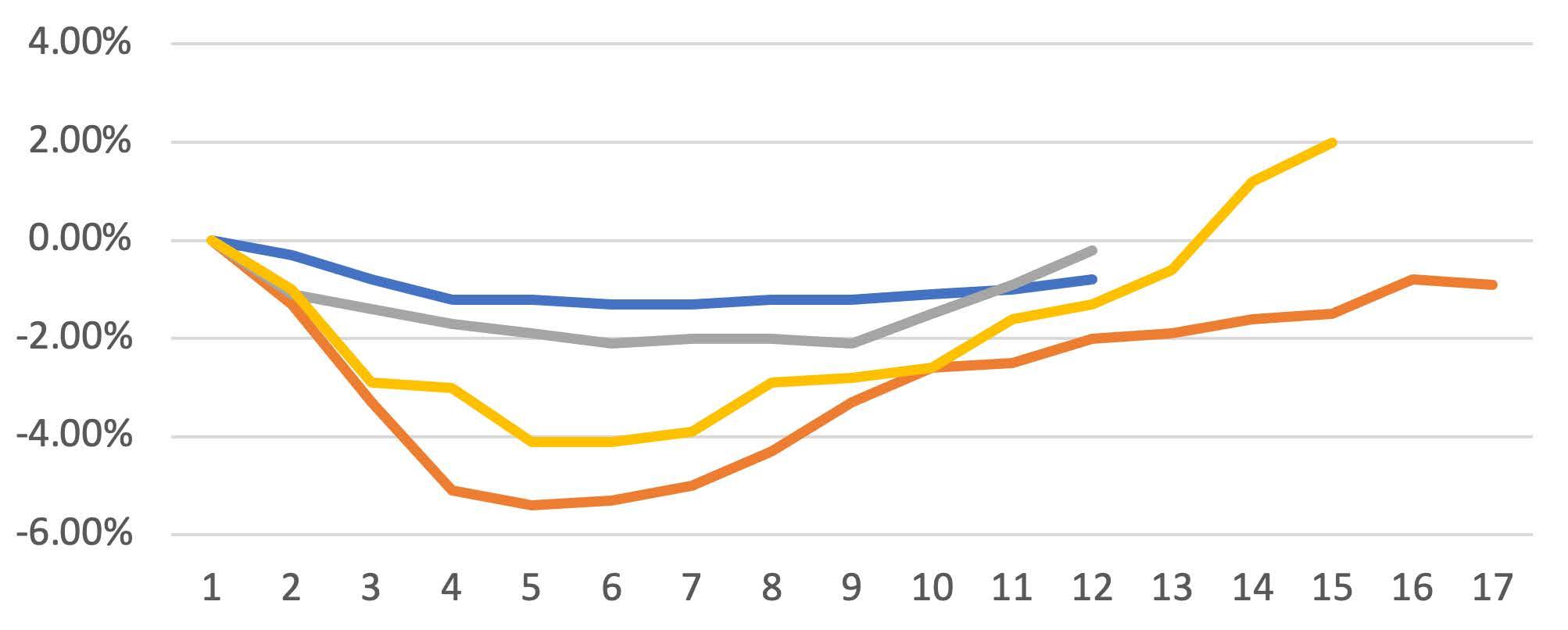
These are the views of the author at the time of publication and may differ from the views of other individuals/ teams at Janus Henderson Investors. Any securities, funds, sectors and indices mentioned within this article do not constitute or form part of any offer or solicitation to buy or sell them.
Past performance does not predict future returns. The value of an investment and the income from it can fall as well as rise and you may not get back the amount originally invested.
The information in this article does not qualify as an investment recommendation.
Visit the website for more information about the Henderson High Income Trust. For more insights, research and commentary on the range of Janus Henderson Investment Trusts, visit the Insights Hub.
Not for onward distribution. Before investing in an investment trust referred to in this document, you should satisfy yourself as to its suitability and the risks involved, you may wish to consult a financial adviser. This is a marketing communication. Please refer to the AIFMD Disclosure document and Annual Report of the AIF before making any final investment decisions. Past performance does not predict future returns. The value of an investment and the income from it can fall as well as rise and you may not get back the amount originally invested. Tax assumptions and reliefs depend upon an investor’s particular circumstances and may change if those circumstances or the law change. Nothing in this document is intended to or should be construed as advice. This document is not a recommendation to sell or purchase any investment. It does not form part of any contract for the sale or purchase of any investment. We may record telephone calls for our mutual protection, to improve customer service and for regulatory record keeping purposes.
Issued in the UK by Janus Henderson Investors. Janus Henderson Investors is the name under which investment products and services are provided by Janus Henderson Investors International Limited (reg no. 3594615), Janus Henderson Investors UK Limited (reg. no. 906355), Janus Henderson Fund Management UK Limited (reg. no. 2678531), Henderson Equity Partners Limited (reg. no.2606646), (each registered in England and Wales at 201 Bishopsgate, London EC2M 3AE and regulated by the Financial Conduct Authority) and Janus Henderson Investors Europe S.A. (reg no. B22848 at 2 Rue de Bitbourg, L-1273, Luxembourg and regulated by the Commission de Surveillance du Secteur Financier). Janus Henderson, Knowledge Shared and Knowledge Labs are trademarks of Janus Henderson Group plc or one of its subsidiaries. © Janus Henderson Group plc
Before investing in an investment trust referred to in this document, you should satisfy yourself as to its suitability and the risks involved, you may wish to consult a financial adviser. This is a marketing communication. Please refer to the AIFMD Disclosure document and Annual Report of the AIF before making any final investment decisions.
If a trust's portfolio is concentrated towards a particular country or geographical region, the investment carries greater risk than a portfolio diversified across more countries.
Some of the investments in this portfolio are in smaller companies shares. They may be more difficult to buy and sell and their share price may fluctuate more than that of larger companies.
This trust is suitable to be used as one component in several in a diversified investment portfolio. Investors should consider carefully the proportion of their portfolio invested into this trust.
Active management techniques that have worked well in normal market conditions could prove ineffective or detrimental at other times.
The trust could lose money if a counterparty with which it trades becomes unwilling or unable to meet its obligations to the trust.
Shares can lose value rapidly, and typically involve higher risks than bonds or money market instruments. The value of your investment may fall as a result.
The return on your investment is directly related to the prevailing market price of the trust’s shares, which will trade at a varying discount (or premium) relative to the value of the underlying assets of the trust. As a result losses (or gains) may be higher or lower than those of the trust’s assets.
The trust may use gearing as part of its investment strategy. If the trust utilises its ability to gear, the profits and losses incured by the trust can be greater than those of a trust that does not use gearing.
All or part of the trust's management fee is taken from its capital. While this allows more income to be paid, it may also restrict capital growth or even result in capital erosion over time.
Taking longer to pay off your home loan may reduce monthly payments in the short term but there is a catch
Mortgage rates are rising, and many homeowners are scrabbling around for ways to make their mortgage payments more affordable. This means longer term mortgages are becoming more common, but buyers need to be aware of how much more this will cost them.

Most people take out a mortgage with a 25-year term, meaning that they repay the loan over 25 years. But you could pick a term anywhere from five years up to around 40 years, depending on your lender. By extending the term of the loan, you reduce your monthly repayments. This is because you’re repaying the loan over a longer period, and so at a slower rate. However, you’ll be charged more interest in the long term, because you’re borrowing money for longer.
With interest rates having risen, this will push up monthly repayments – extending the term is one way of counteracting that. Someone buying a £350,000 home with a 10% deposit could reduce their monthly repayments by £600 by extending the term from 20 years all the way out to 40 years. Even extending the term by five years, from 25 to 30 years, would reduce monthly repayments by £163 – so almost £2,000 a year.
At a higher level of borrowing the savings are greater. Someone buying a £600,000 home with a 10% deposit would pay £278 a month less by extending the term from 25 year to 30 years, or £471 a month by extending it by 10 years to 35 years – a saving of more than £5,600 a year.
The impact of extending your term on the total cost of your borrowing is pretty dramatic, particularly if you’re borrowing a large amount. The total interest costs mount up as you extend the term, so that you pay more than double the interest at 40 years than you do at 20 years. Someone borrowing to buy the £350,000 property over 25 years would pay total interest of around £158,000, while increasing that term to 35 years would add an extra £74,000 to the bill.
On the £600,000 property you would pay total interest of just under £212,000 over a 20year term, but total interest of £464,000 over 40 years. Even increasing the term from 25 to 30 years means you face an extra £62,000 in interest costs.
If your main focus is getting on the property ladder as soon as possible extending the term could still be a good option, but you just need to have your eyes open to how much more it’s going to cost you. Your broker should be able to advise you how much extra you’ll end up repaying over the term of the mortgage, based on your exact deal. If you’ve not already exhausted your budgeting options then
Figures
cost of borrowing when buying a
Figures
it might be a good idea to see if you can make any other cutbacks to your spending so you can afford a higher monthly mortgage repayment, and so a shorter term.
Often first-time buyers will take a longer term on their first mortgage with the intention to reduce it later on, when they remortgage, but that doesn’t always become the case. That means that lots of people could end up paying a mortgage right until they retire – or even having to work longer than they wanted just to afford their mortgage repayments.
You also need to think about the impact it might have on your retirement savings – if you’re paying a mortgage up until retirement that will leave you with less disposable income to put towards pension saving.
However, for people who have more uncertain
incomes taking a longer term could be a good option so they know they won’t struggle to make their mortgage payment even on leaner months. Then if they do have spare cash they can overpay, and so reduce their total cost. Most mortgage lenders let you overpay by 10% of the outstanding amount left on the mortgage, but just check before you make any payments.
Financial services company AJ Bell referenced in this article owns Shares magazine. The author of this article (Laura Suter) and the editor (Tom Sieber) own shares in AJ Bell.
By Laura Suter AJ Bell Head of Personal Finance

The Philadelphia Semiconductor index has proved a valuable indicator in the past
Regular readers of this column will be aware of its faith in the Philadelphia Semiconductor index, or SOX, as a valuable indicator on two fronts.
First, by dint of their ubiquity, silicon chips offer a good insight to global economic activity. Worldwide sales are expected to exceed $600 billion in 2022 and semiconductors are everywhere, from tablets to laptops, cars to robots, smartphones to servers and smart meters to medical equipment.
Second, the 30-stock SOX benchmark has a record as a proxy for global risk appetite in financial markets. Chip and chip-making equipment firms are generally traded as momentum stocks, surging as earnings estimates rise and plunging if they fall, thanks to how operationally geared they are: even a small percentage changes in sales leads to a much bigger percentage change in profits, thanks to the fixed costs associated with research and development and, in some cases, the hugely capital-intensive nature of the business (a state-ofthe-art semiconductor fabrication facility, or fab, now costs billions of dollars).
This all makes the imminent third-quarter reporting season from the global chipmakers and chip
equipment makers particularly important, again for two reasons:
• Major global players such as Micron (MU:NASDAQ), NVIDIA (NVDA:NASDAQ) and AMD (AMD:NASDAQ) are already coughing up profit warnings, thanks in no small part to a horrendous inventory build-up throughout the technology supply chain;
• The SOX index has drooped in a quite alarming way. The benchmark stands 45% below is December 2021 all-time high.
A string of weak earnings reports or – even worse – downbeat outlook statements for the fourth quarter and 2023 could reinforce bear cases for the economy and equities. Equally, bulls will counter that the opposite could hold true, especially as the big slide in chip stocks’ valuations may suggest a good deal of bad news is already expected and discounted.
Global silicon chip sales have shown an impressive 8% compound annual growth rate over the past 40-odd years, a figure which easily surpasses trend worldwide GDP growth. However, the industry is notoriously boom-and-bust.


This is due to either, or a combination of:
• the rise and fall of new product cycles (mainframes, minicomputers, personal computers, mobile phones, smart phones, tablets and so on);
• the vagaries of the economic cycle and increases and decreases in consumer and corporate demand for gadgets and productivitygenerating technology;
• surges in supply as chip-makers over-invest in fresh capacity (and given the long lead times involved in fab construction it is very, very, very hard to calibrate increases in output).
after all.
Capital investment in new capacity has almost doubled in the two years since the pandemic, encouraged by the splurge on consumer spending on gadgets as more people worked from home, wanted to stay connected and be entertained.

That demand is now waning, as stimulus packages come to an end and the cost of living goes up, while corporations are also reassessing their IT needs in an era of increased remote working.

The good news is industry bodies such as the WSTS and SIA are not forecasting a bust for 2023, with 5% sales growth the consensus forecast. The bad news is the scene may be set for a bust
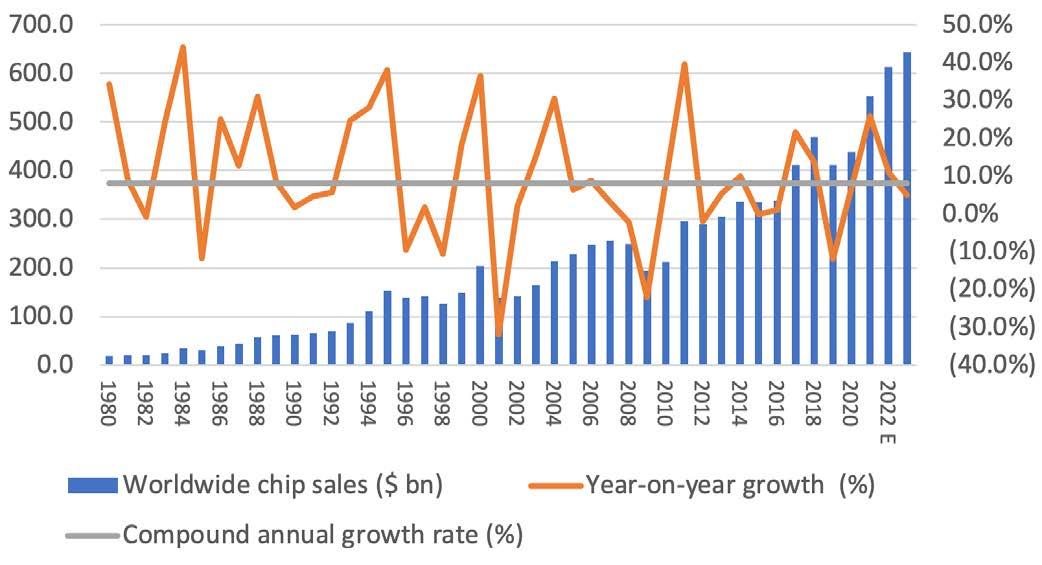
Most worryingly, that slowdown in demand is showing up in the most horrendous inventory bulge at the SOX’s 30 members. Rising stocks suggest slower end-demand and surging output and the last time inventory days reached current levels back in 2012 industry sales and profits growth hit a wall.
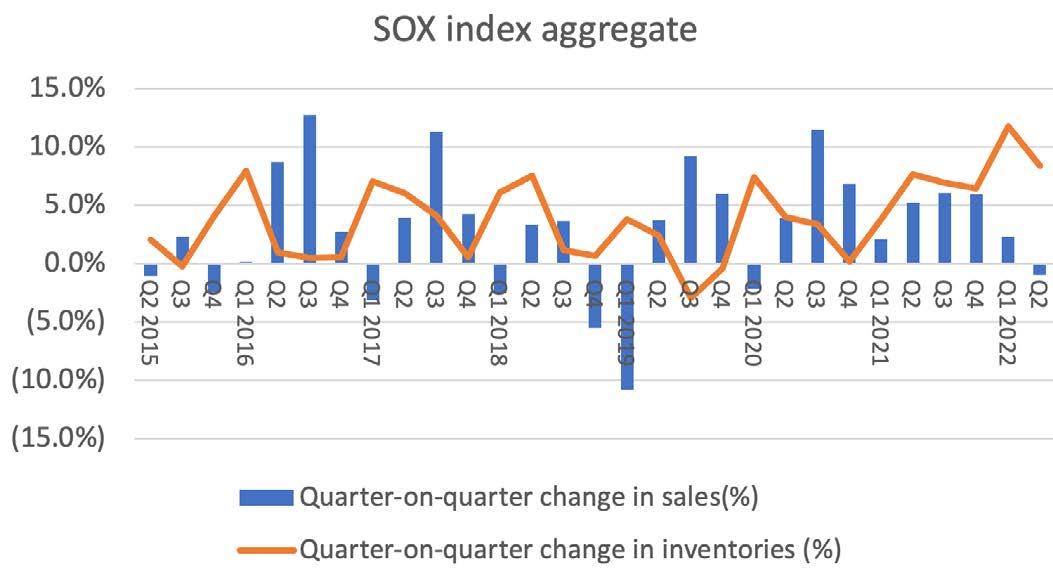
Is the latest chip boom about to become a bust?Source: WSTS, SIA, Gartner Source: WSTS, SIA, SEMI Company accounts, for all 30 members of the SOX index
In this respect, the most important part of the third-quarter results season may not be the headline third-quarter profit figures or any revenue and profit guidance from management teams for the final quarter of 2022, but the third-quarter balance sheets. Any sign of that inventories are on the way back down could be a good sign for the chip companies, and indeed for global enddemand, but any increases could be a worrying one, especially if unsold stocks of chips outstrip sales growth and lead to another increase in inventory days.

It may be that chip firms have intentionally stockpiled products amid in the wake of 2020 and 2021’s shortages, but they will be hoping that end demand holds up. If it doesn’t then chip and chipequipment makers may have a big problem on their hands, although consensus forecasts for 2023 are already looking for just a 4% increase in sales and

flat net profit.
A forward price/earnings multiple of 15 times for 2023 and 13 times for 2024 look interesting, but that assumes the earnings forecasts are accurate (and the underlying premise of broadly flat operating margins of 36% from 2022 to 2024 does look flawed given the industry’s volatile history). It now remains to be seen as to whether the SOX retains its status as a valuable early-warning signal of better or worse economic and stock market conditions ahead. Peaks in the SOX called broader market tops in 2000 and 2006 and bottoms heralded better times ahead in 2002, 2008, 2018 and 2020.
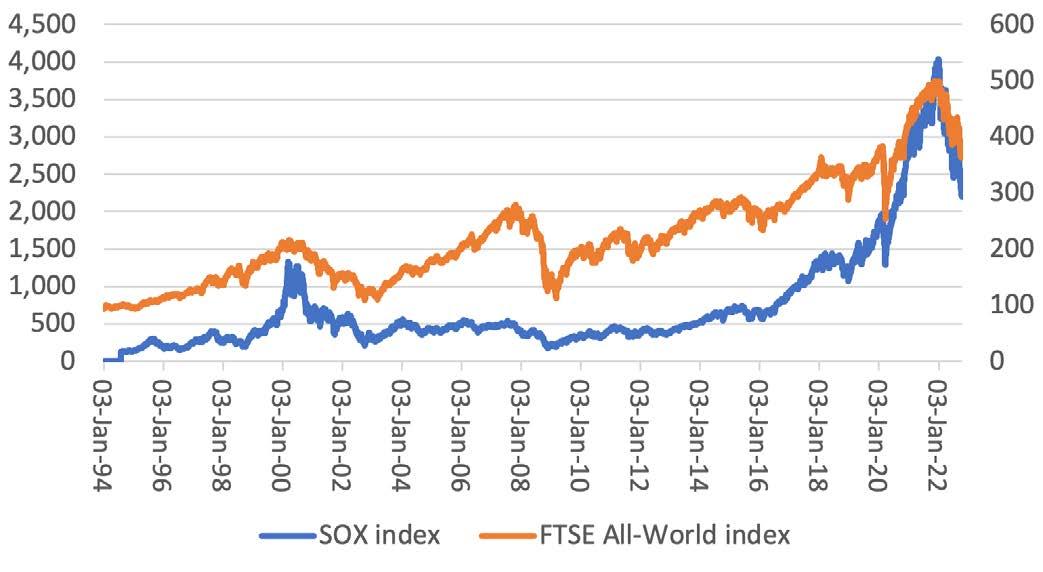

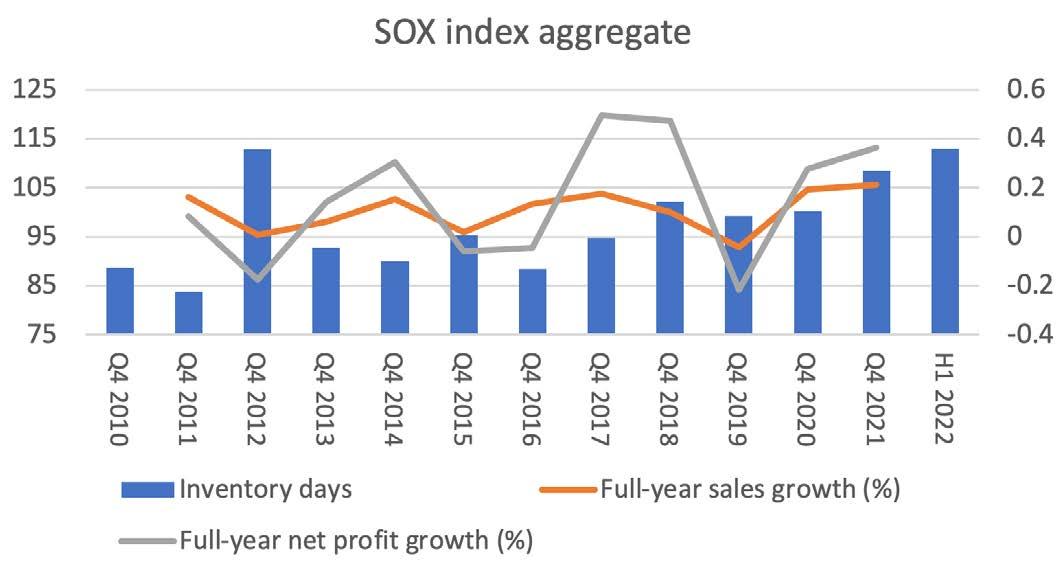
…and inventory days stand at a tenyear high
Analysts already expect a SOX slowdown in 2023
SOX has called market bottoms and tops beforeSource: Company accounts, for all 30 members of the SOX index Source: Company accounts, for all 30 members of the SOX index, Marketscreener, analysts’ consensus forecasts Source: Refinitiv data


Momentum Diversified Income Fund aims to generate a high level of income with the prospect of maintaining the real value of capital over the long term, by investing in a multi-asset portfolio managed with a focus on value.



Henderson Smaller Companies Investment Trust aims to maximise shareholders’ total returns (capital and income) by investing in smaller companies that are quoted in the United Kingdom. Doing this by following a disciplined process of investment in a diversified portfolio of companies and by controlling costs and using borrowings to enhance returns.
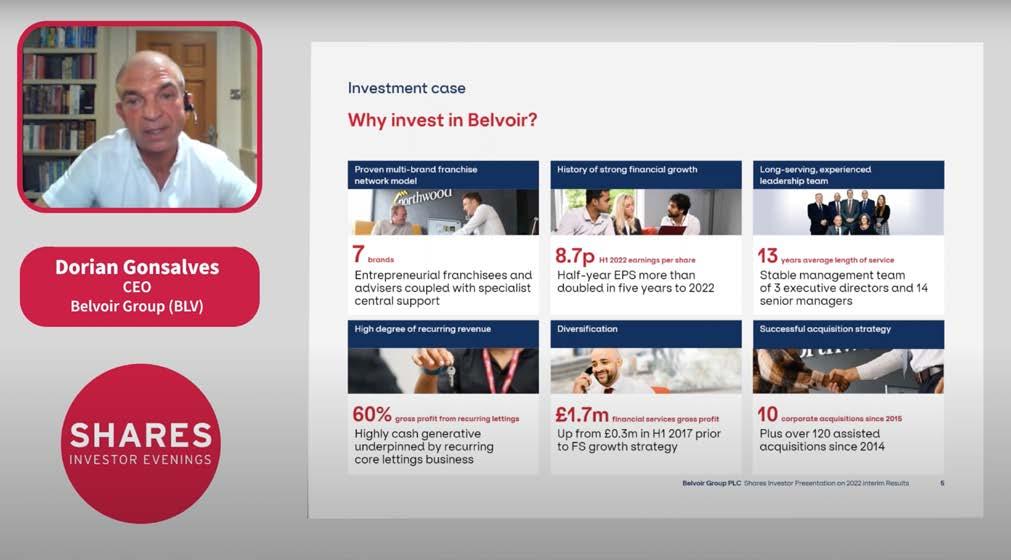

Belvoir Group is a UK-based property franchise group delivering residential lettings and sales, and property-related financial services to the individual businesses nationwide.
I’m planning to buy an annuity next year and have just found out my fund has fallen in value by 35%. I can’t believe it. How can this be possible?
a serious fall are annuity hedging funds. It is possible this is where your money is invested.

Annuity hedging funds usually shift your investments towards a mix of bonds and cash as you approach your chosen retirement date. The aim, as the name suggests, is to hedge your investments against annuity movements.
The ructions in bond markets in recent weeks have generated some pretty scary headlines along the lines of ‘pensions crisis’ and ‘pensions pandemonium’. This in turn, unsurprisingly, has resulted in lots of people panicking about their retirement pots.
The important thing to emphasise is that, for the vast majority of people, the issues facing the Bank of England will have an extremely limited impact.
If you’re in a defined benefit (DB) pension then the sponsoring employer has a legal duty to pay your promised pension. The only way this could change is if the sponsor went bust – and even then, the Pension Protection Fund (PPF) provides a valuable safety net.
If you have a defined contribution (DC) pension, such as a SIPP, your fund should be invested in a diverse mix of bonds and shares around the world. Alternatively, you may have paid a fund manager (or fund managers) to invest your portfolio on your behalf in return for a fee.
Either way, as long as your pension is diversified, what is happening to UK bonds shouldn’t have a material impact on your funds. What’s more, if you are invested you should be focused on the long term, rather than worrying about day-to-day stock market volatility.
And just to round things off, the state pension will not be affected.
The one type of fund that may have experienced
The theory is simple – annuity rates and bond prices move in opposite directions. So, while a big fall in the value of your portfolio might feel painful, if your annuity rate surges by a similar amount then you should broadly end up in the same position at retirement. This is exactly what we have seen recently in the UK.
This strategy is sound if you are planning to buy an annuity. However, there will inevitably be investors who set up a pension years ago, were placed in an annuity hedging fund (and therefore have a heavy bond exposure) and now no longer intend to buy an annuity.
These people will unfortunately be sat on heavy investment losses – although these losses will only be realised if you sell your investments. This is precisely why it’s so important to review your investments and make sure you understand and are comfortable with the risks you are taking.
Send an email to asktom@sharesmagazine.co.uk with the words ‘Retirement question’ in the subject line. We’ll do our best to respond in a future edition of Shares
Please note, we only provide information and we do not provide financial advice. If you’re unsure please consult a suitably qualified financial adviser. We cannot comment on individual investment portfolios.
18:00

Core asset is the Liberator oil field discovered by well 13/23d-8 located in License P.1987, Block 13/23d in which it has a 100% operated interest. i3 Energy’s strategy is to focus on the development of discoveries located close to existing infrastructure and the exploitation of producing fields, whilst maintaining limited exploration exposure. i3 Energy has a strong management team with a track record of delivery.
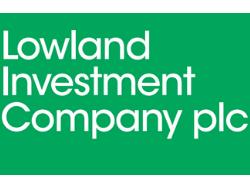
Managed by James Henderson and Laura Foll
The Lowland Investment Company owns a broad spread of predominantly UK companies, of different sizes, with the goal of delivering higher than average return with growth of both capital and income over the medium to long term.

The webinar can be accessed on any device by registering using the link above
details
at 18:00
to
